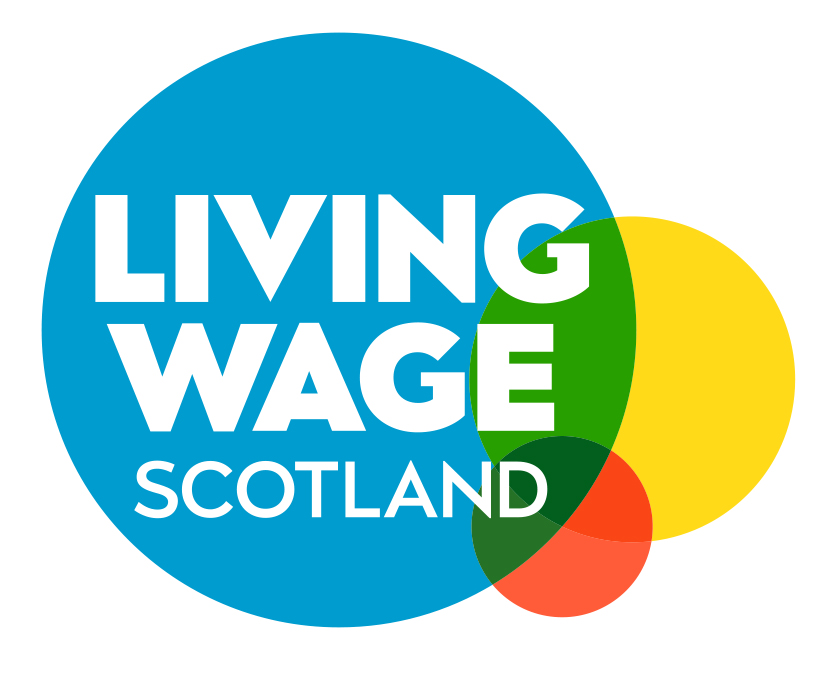By Gail Irvine, Living Wage Scotland Manager
This 1st April marks the increase of National Minimum Wage, the legal wage floor set by the UK Government. But with a spike in the cost of living and National Insurance rises also kicking in, many low income households will feel little benefit. Instead the cost of living crisis will place extraordinary pressures on people who were already struggling to make ends meet. This could not come at a worse time. We have already lived through a lost decade of real wage growth and many low paid workers experienced cuts to their hours and incomes during the COVID-19 pandemic.
The scale of the spike in the cost of living is unprecedented with inflation at a 40 year high, and with the Chancellor’s recent Spring Statement doing little to keep low income households afloat. But while the scale is of a different order, the challenge of bridging the gap between people’s wages and living costs is sadly not new. This has been an ongoing battle, which we have been leading the charge on in Scotland for over eight years, delivering the campaign for the Living Wage. Our campaign encourages employers to go further than the UK Government’s National Minimum Wage, by paying their staff the Living Wage.
#KnowTheDifference – between the real Living Wage and the government minimum
Currently £9.90 an hour, the real Living Wage is set independently and updated annually. It is different from the UK Government’s ‘National Living Wage’ – which is simply the name given to the minimum wage rate for over 23-year-olds. While both aim to tackle low pay, there are important differences between the real Living Wage and the National Minimum Wage.
Most significantly, unlike the minimum wage, the real Living Wage is calculated based on what is needed to achieve an essential minimum living standard. The Living Wage rate is recalculated annually using a robust methodology and the best available data drawing on the real costs of rent, bills, food and other essentials.
The Living Wage is voluntary: employers choose to pay the Living Wage. Not only because it is the right thing to do to help workers meet the cost of living and to reward a hard day’s work with a fair day’s pay. But also because employers see immediate business benefits, in terms of their ability to attract, retain and motivate good performance from their people.
Another key difference is that the Living Wage is payable to all employees aged over 18, while the minimum wage rates differ significantly across age groups. For example, the minimum wage for employees aged over 23 years increases to £9.50 an hour on 1st April. However, employees aged 18-20 will only be legally entitled to £6.83 an hour – dramatically lower take home pay than if they were on the real Living Wage.
Pay a wage that is anchored to the cost of living
Since we began our campaign in Scotland, we have supported over 2,500 employers to pay the Living Wage – uplifting over 52,000 workers onto the real Living Wage, and delivering more than £310m into the workers’ pockets in higher wages. Today, 84% of jobs in Scotland pay above the real Living Wage – making Scotland the best performing of all the UK nations in payment of the Living Wage.
Despite the progress made, low pay is still locking people across the country into poverty. Even before this present crisis, the Living Wage Foundation’s survey of workers earning below the real living wage highlighted that a shocking 1.5 million are regularly skipping meals. While 1.3 million workers say they cannot afford to heat their homes.
The recent increase in the cost of living highlights why paying the real Living Wage is so important, as this is the only rate which is anchored to the cost of living. Becoming a Living Wage employer is a long-term commitment, as Living Wage employers are required to adopt the new Living Wage rate annually. This yearly increase allows employers to plan ahead and ensures workers are uplifted year on year to a rate that is anchored to the cost of living. When the Living Wage rate is recalculated this autumn, the current high rate of inflation will be fed in to ensure the rate remains anchored to, and can help people meet the challenges of, the current economic pressures.
We would urge all employers to pay their staff at the real Living Wage rate, as the minimum required to ensure people are supported to deal with the rising cost of living. Employers should also consider becoming a ‘Living Hours’ employer, pledging to provide security of working hours and contracts alongside payment of the real Living Wage. This is very much the other side of the coin, needed to ensure employees have access to sufficient, predictable working hours to plan their life and finances and make ends meet in these difficult times.
To talk to us about how to become Living Wage or Living Hours employer, please get in touch with us by emailing accreditation@povertyalliance.org

